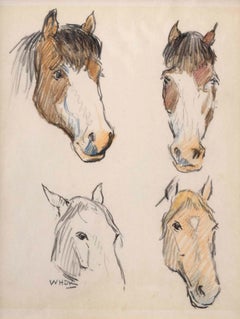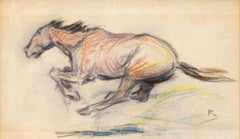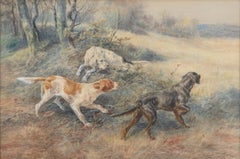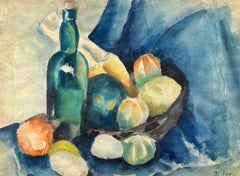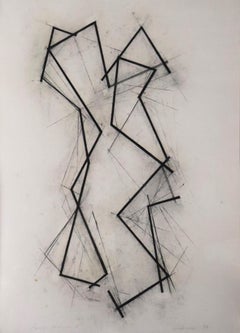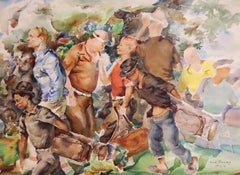Gallery of the Masters Drawings and Watercolor Paintings
Early 20th Century American Modern Animal Drawings and Watercolors
Paper, Pencil, Color Pencil
Early 20th Century American Modern Animal Drawings and Watercolors
Paper, Pencil, Color Pencil
Early 20th Century Realist Animal Drawings and Watercolors
Watercolor, Paper
20th Century Cubist Still-life Drawings and Watercolors
Paper, Watercolor
1990s American Modern Abstract Drawings and Watercolors
Paper, Charcoal
1920s American Modern Figurative Drawings and Watercolors
Paper, Watercolor
19th Century Land Landscape Drawings and Watercolors
Watercolor, Gouache
20th Century American Modern Landscape Drawings and Watercolors
Watercolor
20th Century American Modern Landscape Drawings and Watercolors
Watercolor
20th Century American Modern Landscape Drawings and Watercolors
Watercolor
20th Century American Modern Landscape Drawings and Watercolors
Watercolor
20th Century American Modern Landscape Drawings and Watercolors
Watercolor
20th Century American Modern Landscape Drawings and Watercolors
Watercolor
20th Century Folk Art Abstract Drawings and Watercolors
Crayon, Pastel, Paper, Graphite
20th Century Naturalistic Animal Drawings and Watercolors
Ink, Pen
Early 20th Century Ashcan School Portrait Drawings and Watercolors
Paper, Conté
1950s Modern Animal Drawings and Watercolors
Paper, Ink, Watercolor
1950s American Modern Landscape Drawings and Watercolors
Watercolor
1940s American Modern Landscape Drawings and Watercolors
Watercolor, Paper
Early 20th Century Realist Animal Drawings and Watercolors
Paper, Watercolor
Early 20th Century Modern Landscape Drawings and Watercolors
Paper, Watercolor, Gouache
Early 20th Century American Realist Animal Drawings and Watercolors
Paper, Watercolor
Late 19th Century French School Landscape Drawings and Watercolors
Paper, Watercolor, Gouache
20th Century Modern Still-life Drawings and Watercolors
Paper, Watercolor
1960s American Modern Figurative Drawings and Watercolors
Paper, Ink, Watercolor, Pen
1960s American Modern Landscape Drawings and Watercolors
Paper, Watercolor
Late 19th Century Realist Figurative Drawings and Watercolors
Watercolor
1950s American Impressionist Landscape Drawings and Watercolors
Watercolor
1950s American Modern Landscape Drawings and Watercolors
Watercolor
1960s Modern Landscape Drawings and Watercolors
Watercolor
Mid-20th Century Modern Figurative Paintings
Silk, Ink, Tempera
Late 19th Century Victorian Figurative Drawings and Watercolors
Watercolor, Laid Paper
Early 20th Century American Impressionist Landscape Drawings and Waterco...
Paper, Watercolor
1960s American Realist Figurative Drawings and Watercolors
Paper, Watercolor, Gouache
Early 1900s Art Nouveau Figurative Drawings and Watercolors
Paper, Color Pencil
1940s Realist Figurative Drawings and Watercolors
Paper, Gouache
Early 20th Century American Realist Figurative Drawings and Watercolors
Paper, Ink, Pen
Mid-19th Century American Realist Figurative Drawings and Watercolors
Paper, Watercolor
Mid-19th Century Other Art Style Figurative Drawings and Watercolors
Paper, Watercolor
1950s Realist Figurative Drawings and Watercolors
Charcoal, Archival Paper
1960s Abstract Abstract Drawings and Watercolors
Ink, Watercolor, Archival Paper, Pen
1910s Modern Figurative Drawings and Watercolors
Gouache
1910s Modern Figurative Drawings and Watercolors
Gouache
1860s Realist Figurative Drawings and Watercolors
Paper, Ink, Watercolor
Early 1900s Realist Figurative Drawings and Watercolors
Watercolor, Archival Paper
1980s Impressionist Landscape Drawings and Watercolors
Pastel, Rag Paper
1990s American Realist Landscape Drawings and Watercolors
Watercolor
1930s Realist Figurative Drawings and Watercolors
Charcoal, Archival Paper
1920s Impressionist Landscape Drawings and Watercolors
Gouache
Early 20th Century Landscape Drawings and Watercolors
Gouache
Early 20th Century Landscape Drawings and Watercolors
Gouache
